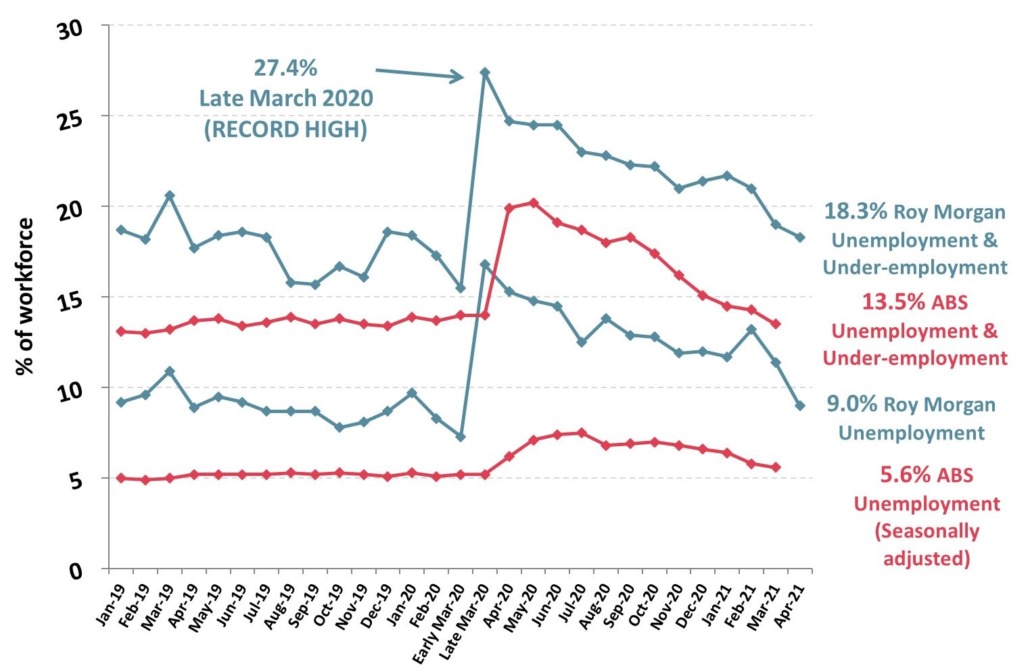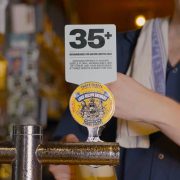60% OF NEW JOBS CREATED ARE CASUAL
The job market is bouncing back at a surprising pace, but the economy isn’t necessarily creating the kind of work Australians need.
Around six in every ten new positions created since the pandemic began have been casual, according to think tank the Australia Institute, while the number of Australians working multiple jobs is increasing at its fastest rate on record.
It suggests that the undeniable momentum in the Australian economy is creating a slew of poor-quality jobs rather than secure ones. Australia’s recovery, in other words, is not nearly as strong as it might appear from the headline figures.
The latest analysis from Roy Morgan exposes just that. It shows Australians were working a record 13 million jobs in April, but that the month’s growth was offset by a sharp rise in underemployment.
“Although there was a lot of good news in the April employment figures there is still a large cohort of 2.66 million Australians – 18.3% of the workforce – who are either unemployed or under-employed,” Roy Morgan CEO Michele Levine said.
Approximately 268,000 more Australians were working fewer hours than they would like in April. Combined with the number of unemployed Australians, Levine said “this under-utilised cohort is 500,000 higher than pre-pandemic”.
Roy Morgan figures typically show the labour market is in worse shape than the official ABS figures do, incorporating cohorts that the ABS excludes as part of its methodology.

Its latest figures present a more nuanced picture of an economy that is both producing more jobs than before but ones that are both insecure and insufficient to sate a growing number of Australians looking for work. To put that in perspective, 69.1% of Australians aged over 14 years want a job right now, compared to 67.1% last year.
“Compared to the employment market pre-pandemic there is now a larger workforce which includes increases in both employment and unemployment as well as higher under-employment in an economy with a record amount of part-time employment,” Levin said.
Tips for clubs and hotels to make your roles more interesting.
With the introduction of more technology into the industry, base level and lower management level hospitality jobs are quite boring compared to back in the day. Here are some tips to make the jobs more attractive to candidates.
- Most people don’t know that clubs generally pay more than other hospitality venues. Spell out the pay rates quickly in interviews.
- Lay out a learning and development plan so they can see a growth path in the role.
- Don’t dismiss older applicants looking to change careers. If they have made the decision to leave what they were doing for a fresh start they won’t care about money and are very keen for a change. Lots of ex-Qantas staff are now working in pubs around Australia…and loving it.
- Most kitchens are run by leaseholders. Come to an agreement with the chef to meet some of the training wages for apprentices provided they stay for a number of years.
- Leverage referrals – incentivize staff and create an employee referral program. Encourage your current employees to refer people from their own networks and to share the recruitment campaign via their social media.
- Try peer interviewing: Delegate responsibility to the people who know what the actual job entails to interview prospective employees and assess their abilities.
The hospitality industry is not going to slow down any time soon, and the demand placed on you to provide a top-notch service is only going to increase as more and more people need hospitality services.
The need to improve your hospitality recruiting strategy in an increasingly competitive market is an obvious one.
Adapted for hospitality from an article originally appearing in>>> www.businessinsider.com.au/insecure-work-gig-economy-australia-jobs-growth-2021-5













